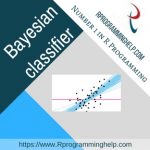
Package assortment. After planning your project you ought to determine which deals are best suited to have the perform finished swiftly and efficiently.
In this context we outline ‘workflow’ as being the sum of procedures, habits and techniques that enable productivity.nine To some extent workflow is about particular Choices. Anyone’s brain performs otherwise so probably the most correct workflow varies from Individual to individual and from one project to the subsequent. Project administration tactics may even fluctuate with regards to the scale and kind with the project: it’s an enormous matter but can usefully be condensed in five top recommendations.
Contemporary courses in other languages also usually use very similar strategies, although significantly less stringent, and only in certain pieces, as a way to lessen complexity, normally along with complementing methodologies like information structuring, structured programming and item orientation.
If the info in your data body is each of the similar sort, think about converting it to your matrix for any speed Improve.
You’ll see some interesting tricks and strategies On this chapter, but nearly all of Whatever you’ll discover is going to be a lot more significant as the setting up blocks For additional Sophisticated tactics. A very powerful issue to be familiar with about R is that features are objects in their own individual appropriate. You can operate with them the exact same way you work with another kind of object. This concept is going to be explored in depth in useful programming.
Placing start out dates and deadlines for each process will help prioritise the function and make sure you are heading in the right direction. Breaking a sizable project into smaller chunks is extremely encouraged, creating enormous, intricate duties additional achievable and modular PMBoK (2000). ‘Chunking’ the get the job done may even make collaboration much easier, as we shall see in Chapter five.
In the C++ functionality each line needs to be terminated with ; In R, we use ; only when my sources We now have a number of statements on exactly the same line.
Now we could just type function_1(); This is actually the exact same notion that R utilizes for running perform identify collisions when loading offers. Over Each and every functionality we wish to export/use in R, we increase the tag
The real challenge is always that programmers have expended much an excessive amount time worrying about effectiveness in the incorrect areas and at the incorrect instances; untimely optimisation is the foundation of all evil (or at the least nearly all of it) in programming.
Making packages is good apply concerning Discovering to properly document your code, retailer illustration knowledge, and perhaps (through vignettes) assure reproducibility. However it will take a great deal of time beyond regulation so really should not be taken flippantly. This approach to R workflow is try this web-site appropriate for handling intricate projects which repeatedly use precisely the same routines which may be converted into functions.
Your entire code is all over 100 lines prolonged. To ensure that profvis to completely profile the code, the successful deal has to be put in from source
With speedy improves from the variety and effectiveness of packages it is more vital than ever to look at the array of choices on the outset. By way of example *_join() from dplyr is usually much more ideal than merge(), as we’ll see in 6.
But GeeKeR is forced to stay awake to stop becoming a monster, and his slumber deprivation-induced hallucinations cause no stop of difficulty for our trio.
A not often very simple to study, but sensible copy continue reading this & paste structure has actually been preferred throughout this handbook. Within this structure all commands are represented in code packing containers, the place from this source the reviews are given in blue shade. To save lots of space, normally various commands are concatenated on just one line and separated with a semicolon ';'. All feedback/explanations begin with the normal remark indication '#' to forestall them from becoming interpreted by R as instructions.